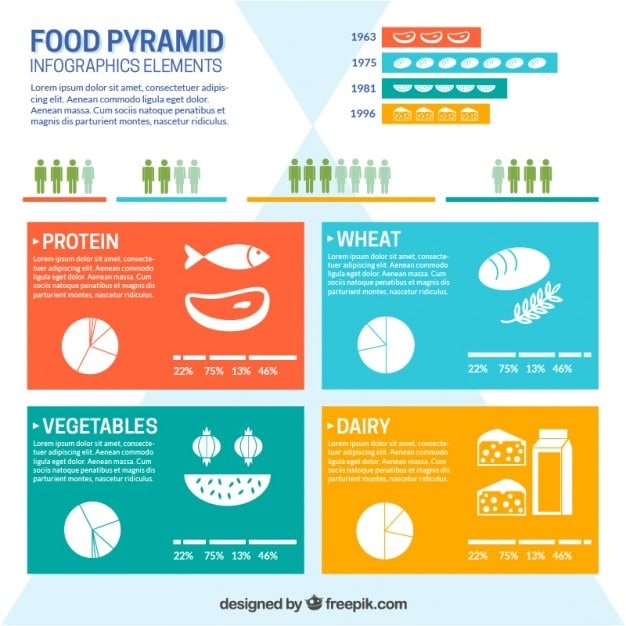Decoding Food Allergies: A Parent’s Guide for US Parents

Decoding Food Allergies involves understanding common allergens, recognizing symptoms, and implementing safe food substitutions. This guide provides US parents with essential knowledge and practical tips to navigate food allergies effectively, ensuring their children’s health and well-being.
Decoding Food Allergies: A Parent’s Guide to Common Allergens and Substitutions
Navigating the world of food allergies can feel overwhelming, especially for parents in the US. Understanding common allergens and finding suitable substitutions is crucial for ensuring your child’s safety and well-being. This guide, decoding food allergies, aims to equip you with the knowledge and tools necessary to confidently manage your child’s dietary needs.
Understanding the Basics of Food Allergies
Food allergies are a significant concern for many US families. They occur when the body’s immune system mistakenly identifies a food protein as harmful and triggers an allergic reaction. Understanding the mechanics behind these reactions is the first step in effectively managing them.
What Happens During an Allergic Reaction?
When a person with a food allergy consumes the offending food, their immune system releases a flood of chemicals, including histamine. These chemicals can cause a range of symptoms, from mild skin rashes to severe, life-threatening anaphylaxis.
Common Symptoms of Food Allergies
Recognizing the symptoms of a food allergy is crucial for timely intervention. Symptoms can vary from person to person and can affect different parts of the body. Some common symptoms include:
- Hives or skin rashes
- Nausea, vomiting, or diarrhea
- Stomach pain
- Swelling of the lips, tongue, or throat
- Difficulty breathing or wheezing

Food allergies affect millions of people in the US, with children being particularly vulnerable. The prevalence of food allergies has been on the rise, making it even more important for parents to be informed and prepared.
Identifying Common Food Allergens
Certain foods are more likely to cause allergic reactions than others. These common allergens are responsible for the vast majority of food allergy cases in the US. Knowing what to look for on food labels is key.
The “Big Eight” Allergens
The Food Allergen Labeling and Consumer Protection Act (FALCPA) requires food manufacturers in the US to clearly label products that contain any of the “Big Eight” allergens. These include:
- Milk
- Eggs
- Peanuts
- Tree nuts (such as almonds, walnuts, and pecans)
- Soy
- Wheat
- Fish
- Shellfish
It’s important to note that even if a food product doesn’t explicitly list one of these allergens, it may still be present due to cross-contamination during manufacturing. Always check the label for advisory statements like “may contain traces of…” or “manufactured in a facility that also processes…”
Hidden Sources of Allergens
Allergens can sometimes hide in unexpected places. For example, milk proteins can be found in some processed meats, and soy can be an ingredient in certain sauces and dressings. Reading labels carefully is essential to identify these hidden allergens.
Becoming familiar with the “Big Eight” allergens and their potential hidden sources will empower you to make safer food choices for your child. Always double-check labels and don’t hesitate to contact manufacturers if you have any questions.
Reading Food Labels: A Crucial Skill
For parents of children with food allergies, reading food labels is not just a habit; it’s a necessity. Understanding how to decipher ingredient lists and allergen statements is vital for preventing allergic reactions.
Understanding Ingredient Lists
The ingredient list on a food label lists all ingredients in descending order by weight. This means that the ingredient present in the largest amount is listed first. Pay close attention to this list, looking for any hidden sources of allergens.
- Be aware of alternative names for common allergens (e.g., casein for milk, albumin for eggs).
- Look for ingredients that might be derived from allergens (e.g., soy lecithin, wheat starch).
Decoding Allergen Statements
In addition to the ingredient list, food labels often include allergen statements. These statements typically appear near the ingredient list and indicate whether the product contains any of the “Big Eight” allergens.
Beware of “May Contain” Statements
Statements like “may contain traces of…” or “manufactured in a facility that also processes…” indicate that the product could potentially be contaminated with allergens. These statements are voluntary and not legally required, so their absence doesn’t guarantee a product is allergen-free.

Mastering the art of reading food labels empowers you to make informed decisions about the foods you purchase and serve to your child. It’s an essential skill for every parent managing food allergies.
Navigating Dining Out with Food Allergies
Dining out can be a challenge when managing food allergies, but with careful planning and communication, it can be a safe and enjoyable experience. Here are some tips for navigating restaurants with food allergies:
Plan Ahead
Before heading to a restaurant, check their menu online to see if they offer allergen information. Some restaurants even have dedicated allergen menus. Call ahead to speak with the manager or chef about your child’s allergies.
Communicate Clearly
When you arrive at the restaurant, inform your server about your child’s allergies. Be specific about which foods need to be avoided and ask about potential cross-contamination risks. Don’t assume that the staff is knowledgeable about food allergies; take the time to educate them.
Ask Questions
Don’t hesitate to ask questions about ingredients and preparation methods. Find out if the restaurant uses separate cooking surfaces and utensils for allergen-free meals. Inquire about sauces, dressings, and marinades, as they often contain hidden allergens.
- Confirm that your order is prepared according to your specifications.
- Consider bringing your own safe snacks or meals for your child, especially if you’re unsure about the restaurant’s ability to accommodate their needs.
Dining out with food allergies requires careful planning, clear communication, and a proactive approach. By taking these steps, you can minimize the risks and ensure a safe and enjoyable dining experience for your child.
Safe Food Substitutions for Common Allergens
Finding suitable substitutions for common allergens is essential for maintaining a balanced and enjoyable diet. Fortunately, there are many delicious and nutritious alternatives available.
Milk Substitutions
Many non-dairy milk alternatives can replace cow’s milk in most recipes. These include almond milk, soy milk, rice milk, oat milk, and coconut milk. Each type of milk has a unique flavor and texture, so experiment to find the best option for your child’s taste.
Egg Substitutions
Eggs are often used as binders in baked goods. Some common egg substitutes include applesauce, mashed banana, flaxseed meal mixed with water, and commercial egg replacers.
Wheat Substitutions
For those with wheat allergies or celiac disease, there are many gluten-free flours available, such as rice flour, almond flour, tapioca flour, and potato starch. These flours can be used to make breads, cakes, and other baked goods.
- For peanut allergies, consider using sunflower seed butter or soy butter as a replacement.
- For tree nut allergies, seeds like pumpkin seeds or sunflower seeds can add a similar crunch and flavor to dishes.
Exploring safe food substitutions can open up a whole new world of culinary possibilities. By experimenting with different ingredients and recipes, you can create delicious and allergen-free meals for your child.
Creating an Allergy-Safe Home Environment
Creating an allergy-safe home environment is essential for minimizing the risk of allergic reactions. This involves implementing strategies to prevent cross-contamination and ensuring that your home is free of allergens.
Preventing Cross-Contamination
Cross-contamination occurs when allergens are unintentionally transferred from one food to another. To prevent this, use separate cutting boards, utensils, and cookware for allergen-free meals. Wash your hands thoroughly with soap and water before preparing food.
Designating Allergen-Free Zones
Consider designating certain areas of your home as allergen-free zones. For example, you might dedicate a specific shelf in your pantry for allergen-free snacks or a separate refrigerator compartment for allergen-free foods.
Educating Family and Friends
It’s important to educate family members, friends, and caregivers about your child’s allergies and the steps they need to take to ensure their safety. Provide them with a list of foods to avoid and instructions on how to prevent cross-contamination.
- Regularly clean and sanitize your kitchen surfaces to remove any potential allergens.
- Store allergen-free foods in airtight containers to prevent contamination.
Creating an allergy-safe home environment requires vigilance and attention to detail. By implementing these strategies, you can significantly reduce the risk of allergic reactions and create a safe and comfortable space for your child.
| Key Point | Brief Description |
|---|---|
| ⚠️ Identify Triggers | Know common allergens to avoid. |
| 🧐 Read Labels | Check ingredients and allergen warnings. |
| 🍽️ Safe Dining | Communicate clearly at restaurants. |
| 🏠 Allergy-Safe Home | Prevent cross-contamination at home. |
Frequently Asked Questions
▼
The most common food allergies in children in the US include milk, eggs, peanuts, tree nuts, soy, wheat, fish, and shellfish. These “Big Eight” allergens account for the majority of allergic reactions.
▼
Symptoms of a food allergy can vary, but common signs include hives, rashes, vomiting, diarrhea, swelling, and difficulty breathing. If you suspect a food allergy, consult with a pediatrician or allergist.
▼
A food allergy involves the immune system, while a food intolerance does not. Food intolerances typically cause digestive discomfort, while food allergies can trigger more severe and potentially life-threatening reactions.
▼
While some children outgrow certain food allergies (like milk and egg), others may persist throughout life. There is currently no cure for food allergies, but research is ongoing, and treatments like oral immunotherapy show promise.
▼
If your child experiences a severe allergic reaction (anaphylaxis), use an epinephrine auto-injector (EpiPen) immediately and call 911. For milder reactions, administer antihistamines and monitor symptoms closely.
Conclusion
Understanding and managing food allergies is paramount for the health and well-being of children in the US. By identifying common allergens, diligently reading food labels, navigating dining out with care, and creating an allergy-safe home environment, parents can empower their children to live full and healthy lives, despite their dietary restrictions.





